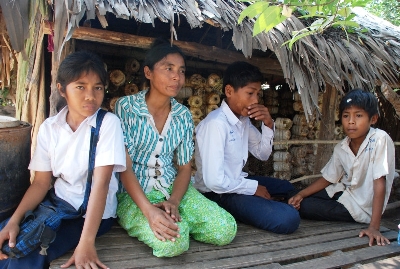Few emerging models for international development have offered as much promise and peril as microfinance. Pioneered by Grameen Bank, founder Muhammad Yunus in 1976, microfinance promised to fill a major gap in economic development: extending capital to the world's poorest citizens so they could lift themselves, their families, and their communities out of poverty.
Yet, microfinance has come under increasing scrutiny in recent months. Stories of astronomical interest rates driving the poor deeper into poverty, compounded by tales of malicious moneylenders intimidating lendees to the point of suicide, have recently come to light in the international press, exposing fundamental flaws in the design of institutional, for-profit microfinance. Not only are borrowers often innumerate, illiterate and unfamiliar with interest rate calculations, but they frequently have little or no awareness of local demand for goods and services. Consequently, they often fail to establish successful income-generating ventures and cannot pay back their loans.
Despite these severe shortfalls, many microfinance models continue to meet with resounding success. The "Self Help Group" model employed by the nonprofit Lotus Outreach International as a part of its Integrated Rural Development project is one powerful example.
How does it work? Self Help Groups are comprised of approximately 35 local villagers (mostly women) and established in cooperation with local governance. Lotus Outreach and its local partner, the Cambodian Organization for Children and Development (COCD), have been working with Self Help Groups (SHGs) in Pursat, Cambodia, for over six years. Lotus Outreach supplied each group about $160 in capital assistance to create a revolving social fund that will provide low-interest loans to group members to start or expand small businesses.
Group members receive in-depth training on bookkeeping, accounting, organization and successful income-generating activities. One of the main differences to conventional microloans is that interest rates and loan terms are collectively established by Self Help Group members, and all participants make a commitment to top off the fund with their own savings. What's more, the Self Help Groups designate a portion of the fund's earned interest toward community development projects, such as supporting local orphanages, constructing village schools and providing emergency relief to families struck by catastrophe.
In contrast with many for-profit models, which line the pockets of those aiming to exploit the poor, SHG interest is always reinvested into the community. Since Lotus Outreach began supporting the establishment of six SHGs in 2009, their collective community funds have more than doubled in value.
The story of Chuin Chim Li underscores how -- when managed properly -- little loans can make a big difference. Since joining the Self Help Group, Chuin has taken out three loans to begin and expand a mushroom farm. Though her business is thriving, she still struggles to make her payments to the SHG. "We took an outside loan of $100 from a large microfinance institution to pay medical bills from treating typhoid, and had to sign over our house as collateral," she tells us. In contrast to the SHG loans which have modifiable repayment schedules and do not require collateral, the risk of losing her house means Chuin must put her institutional debt before everything else.
Chuin's eyes filled with tears while telling us that as a widow, she previously couldn't provide her four children with enough to eat. "Before starting the mushroom business we didn't have enough to support the family, food, school and all, we were basically falling down." Today, although finances are tight, Chuin and her family are getting back on their feet. "I've always wanted a better life but didn't know what to do, but now I have this mushroom growing skill and can support my family... why didn't you people come three years earlier?!" she asks playfully.
Perhaps most importantly, the SHGs represent a single piece of a broader development strategy in Phnom Kravanh. In addition to providing capacity-building and capital assistance to the SHGs, Lotus Outreach also provides children's scholarships, teaches villagers about preventative healthcare practices, builds wells and distributes water filters, constructs hygienic toilets, and supports home gardens and cash crop production. Recognizing that poor education and health, food insecurity, and lack of economic opportunity, are interconnected problems, Lotus Outreach is working to transform impoverished communities from the inside out.
"You have taken the place of my husband and we are all really grateful and can't thank you enough!" says Chuin. "Please continue to help us for as long as possible, so our children can complete their education. We don't want to go backwards now."
Lotus Outreach is hoping to expand the Integrated Rural Development project to as many as ten additional villages this year. To learn more about the project, please visit http://lotusoutreach.org/ird.php .
SHG member Chuin with her children at their home in Phnom Krav

